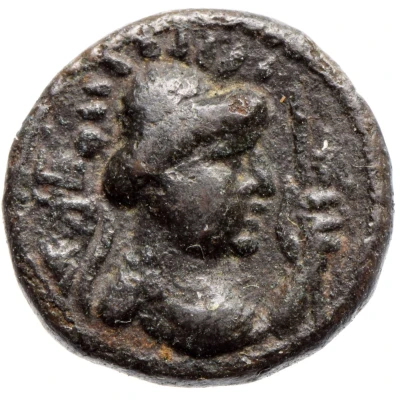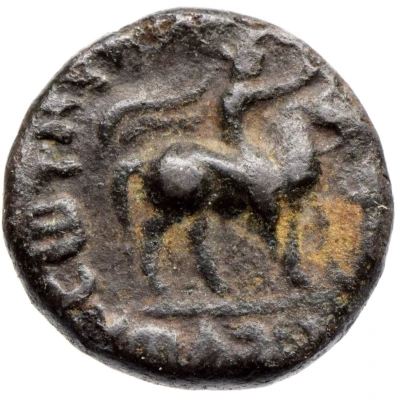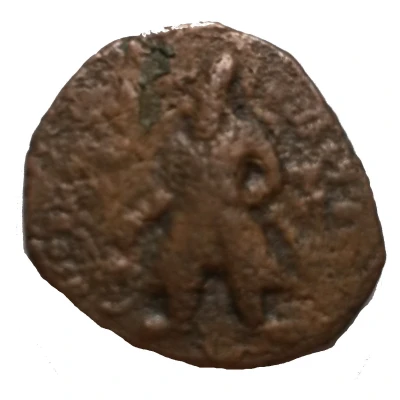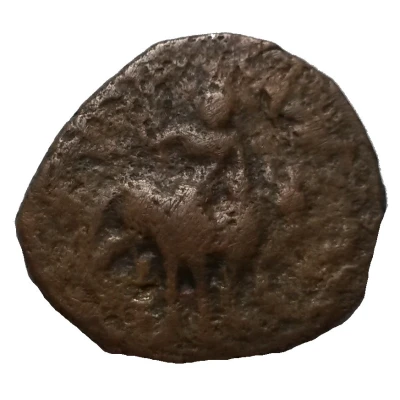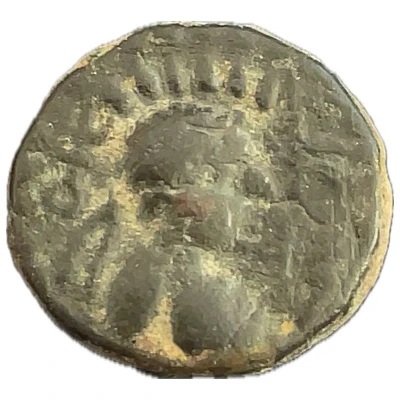
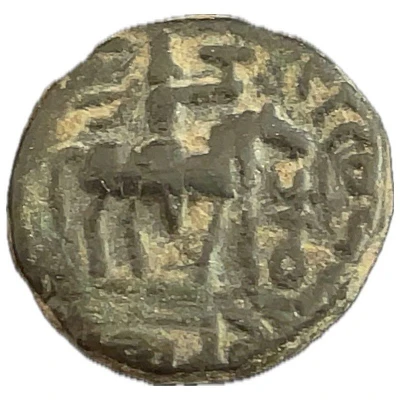

© DMK Collection
Æ Drachm - Wima Takto Soter Megas
| Copper | 2.13 g | 13 mm |
| Issuer | Kushan Empire (India (ancient)) |
|---|---|
| Emperor | Vima Takto (Οοημο Τακτοο) (80-110) |
| Type | Standard circulation coin |
| Years | 90-113 |
| Value | Drachm (1) |
| Currency | Drachm |
| Composition | Copper |
| Weight | 2.13 g |
| Diameter | 13 mm |
| Shape | Round (irregular) |
| Orientation | Variable alignment ↺ |
| Demonetized | Yes |
| Updated | 2024-10-10 |
| Numista | N#400457 |
|---|---|
| Rarity index | 91% |
Reverse
The King mounted on a horse to right, monogram front of horse with Kharoshti legend around
Script: Kharosthi
Lettering: BACIΛEV BACIΛEWN CWTHP MEΓAC
Translation: King of Kings, great savior
Edge
Plain
Comment
Ruler: Wima Takto (Vima Taktu or Sadashkana)
Dates of Reign: 90 – 113
Mint: Probably Bagram
Vima Takto was long known as "The nameless King", since his coins only showed the legend "The King of Kings, Great Saviour", until the discovery of the Rabatak inscription helped connect his name with the title on the coins.
Vima Takto's empire covered northwestern India and Bactria towards China.
During his reign, Kushan embassies were also sent to the Eastern Han imperial court.
Interesting fact
One interesting fact about this coin is that it features a unique blend of Indian and Greek influences in its design. The Kushan Empire, which ruled over much of the Indian subcontinent and parts of Central Asia during the 1st and 2nd centuries AD, was known for its cultural exchange and syncretism, and this coin reflects that. The obverse of the coin features a depiction of Wima Takto, also known as Soter Megas, who was a Kushan emperor who ruled from 90 to 113 AD. He is shown wearing a Greek-style crown and holding a scepter, while the reverse features a seated figure of the Hindu goddess Lakshmi, who was revered as a symbol of prosperity and good fortune. This fusion of Indian and Greek elements in the coin's design highlights the diverse cultural influences that shaped the Kushan Empire.
